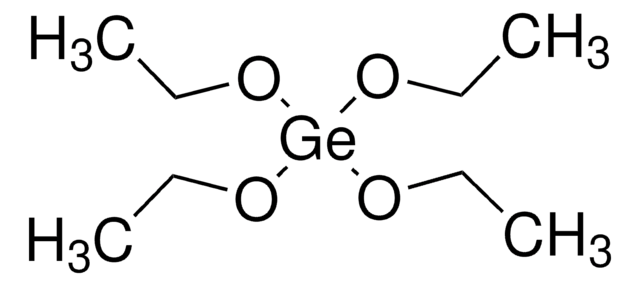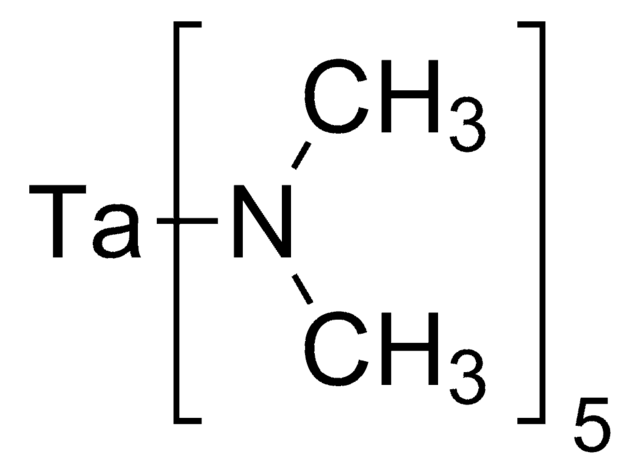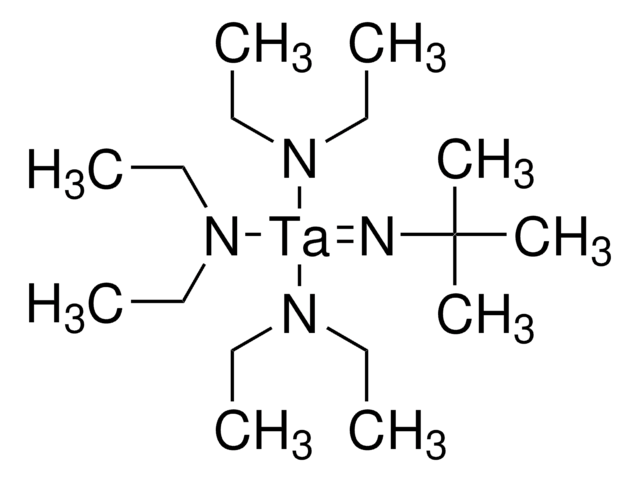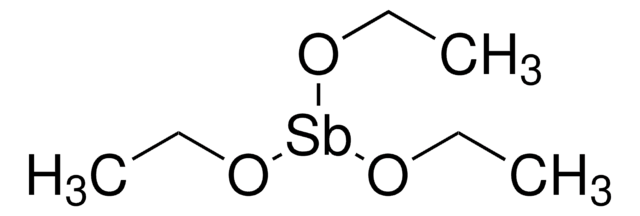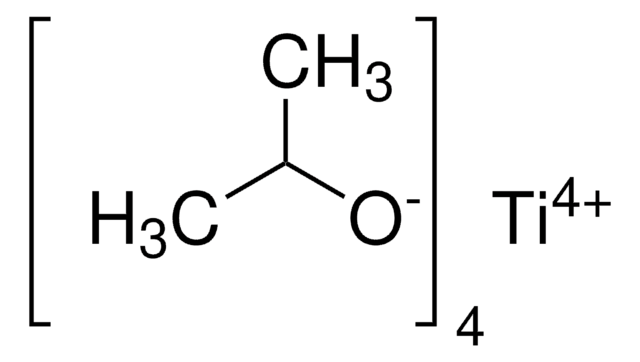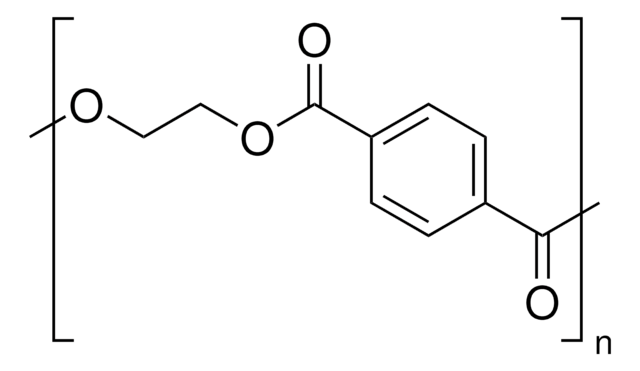760404
Tantalum(V) ethoxide
packaged for use in deposition systems
Synonym(s):
PET, Pentaethoxytantalum, Pentaethyl tantalate, Tantalum pentaethoxide
About This Item
Recommended Products
form
liquid
refractive index
n20/D 1.487 (lit.)
bp
155 °C/0.01 mmHg (lit.)
mp
21 °C (lit.)
density
1.566 g/mL at 25 °C (lit.)
SMILES string
CCO[Ta](OCC)(OCC)(OCC)OCC
InChI
1S/5C2H5O.Ta/c5*1-2-3;/h5*2H2,1H3;/q5*-1;+5
InChI key
HSXKFDGTKKAEHL-UHFFFAOYSA-N
Looking for similar products? Visit Product Comparison Guide
Application
signalword
Warning
hcodes
Hazard Classifications
Flam. Liq. 3
Storage Class
3 - Flammable liquids
wgk_germany
WGK 1
flash_point_f
84.2 °F - closed cup
flash_point_c
29 °C - closed cup
Certificates of Analysis (COA)
Search for Certificates of Analysis (COA) by entering the products Lot/Batch Number. Lot and Batch Numbers can be found on a product’s label following the words ‘Lot’ or ‘Batch’.
Already Own This Product?
Find documentation for the products that you have recently purchased in the Document Library.
Customers Also Viewed
Our team of scientists has experience in all areas of research including Life Science, Material Science, Chemical Synthesis, Chromatography, Analytical and many others.
Contact Technical Service



